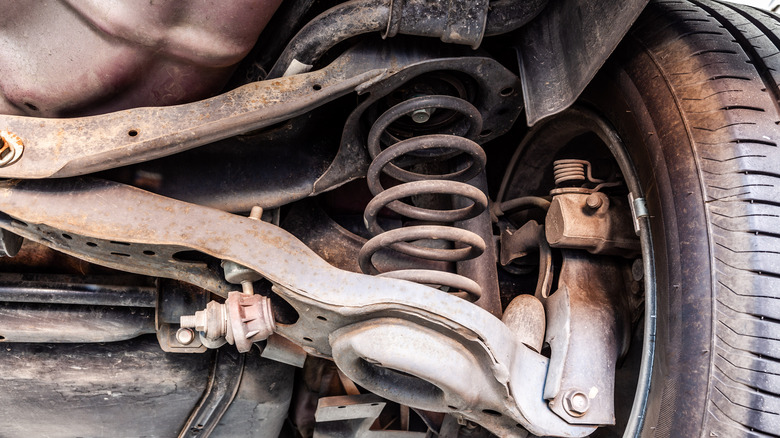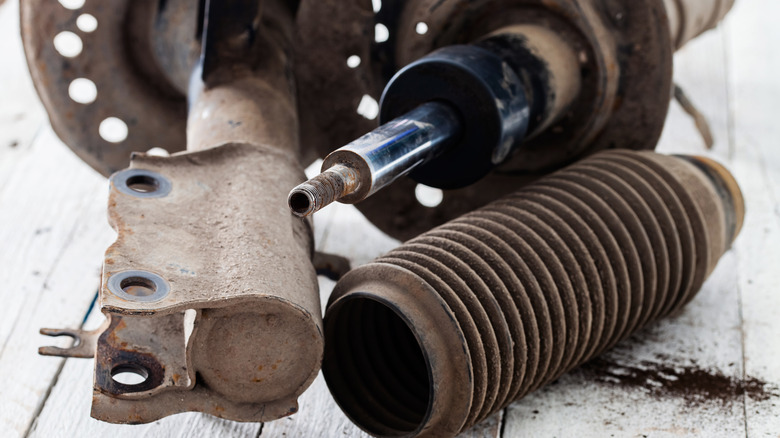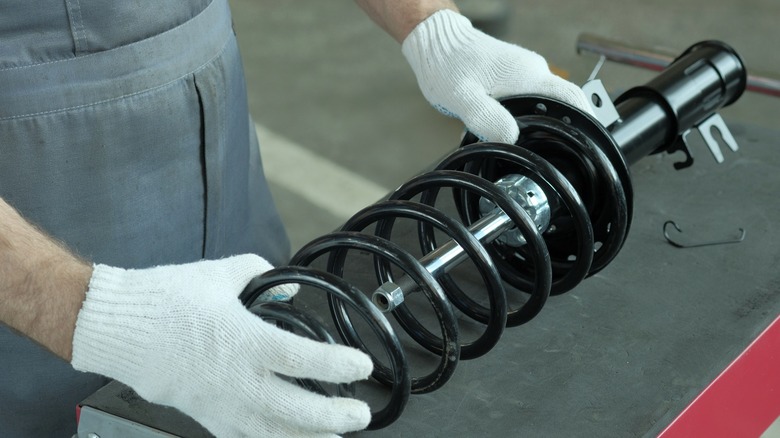Here's How Often You Should Replace Your Car's Shocks And Struts
Your car is made up of a myriad of interlocking and cooperating parts, each one serving a very specific purpose, with the ultimate goal of keeping your car on the road and rolling along. It's important to bring your car in for regular maintenance appointments because if even one of those small parts fails, the whole thing can get thrown out of whack. It could be a part you've never even heard of before, but if it's not working right, your car may not be safe to drive.
Case in point, unless you make a habit of driving over dirt and gravel roads, you probably don't pay much mind to your car's shocks and struts. These springy components are what keep your car suspended above the ground and properly leveled while you're driving. Just like any other part, especially ones that endure a lot of wear and tear, your shocks and struts can start to give out after a while. The vital question is when.
Signs of shock and strut wear
Because the shocks and struts in your car endure a lot of physical punishment on a daily basis, the signs that they're starting to fail on you are generally very physical in nature. If you know where to look, they'll be obvious.
For one thing, if you're driving around and your car seems to be bouncing, swaying, or tilting toward the front more than it should be, that's a sign that your shocks aren't absorbing the changes in physical terrain. You may also find it harder than usual to keep your car in one lane of the road when the terrain is bumpy or uneven.
Within the wheel wells, you may notice oil leaking down from the struts, indicating a leak in the line. If you check your tires, you may find indications of "cupping," little divots in the tires created by strong, sudden impacts with uneven terrain. Above all else, if you check the shocks and struts and notice obvious physical damage or warping, they're officially a lost cause.
When and how to replace shocks and struts
Even if your car's shocks and struts aren't exhibiting any obvious physical abnormalities, the longer you drive on them, the greater the chance of a sudden breakdown. You don't want those things to fail on you while you're out and about, which is why you need to get those parts replaced after reaching a certain mileage. Generally speaking, that mileage is around 80,000. No matter how strong you think your car is, that's usually when it's time to replace the shocks and struts.
As for how you get the shocks and struts replaced, it is technically possible to do it yourself. You can buy premade strut assemblies from your local auto parts store, and if you install them yourself, you'll save some cash. However, this is a very in-depth process, requiring knowledge of your suspension and wheels' exact ins and outs.
If you don't already know how to do this process yourself, attempting to D.I.Y. it is especially inadvisable. Instead, bring the car to your local mechanic and have them install a new strut assembly. Yeah, it costs a little more, but it's worth it for a job well done.


